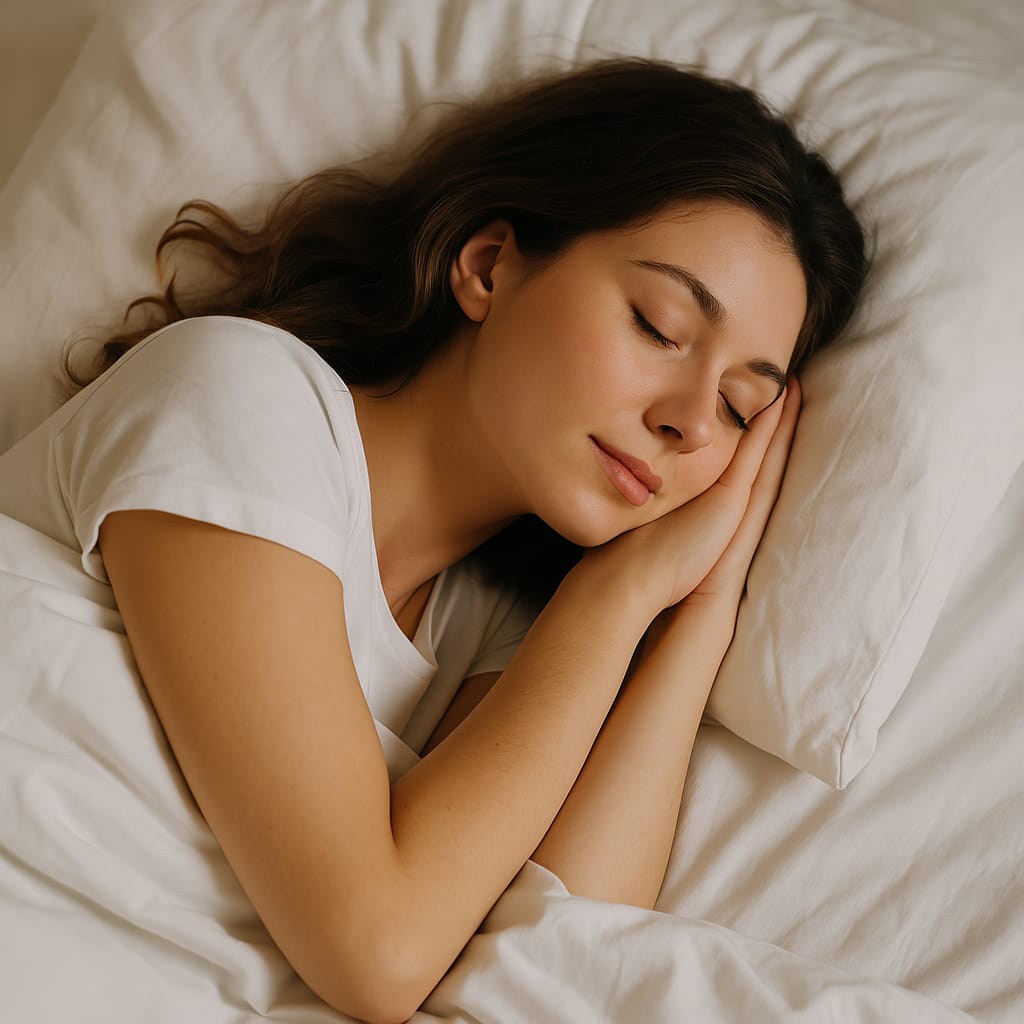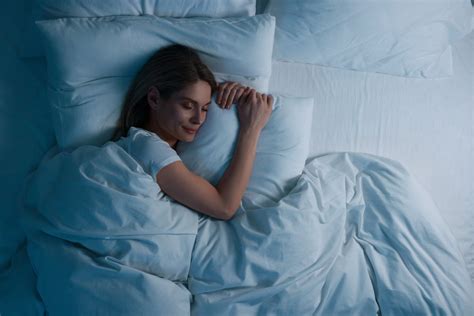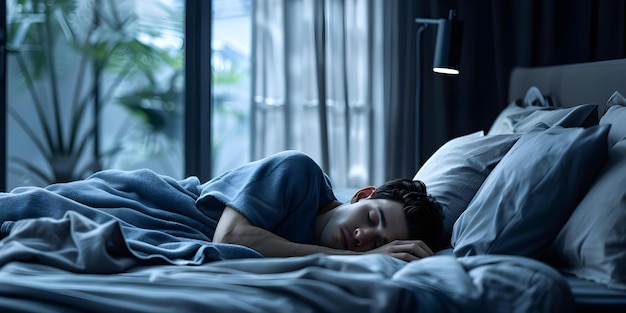In the demanding rhythm of 21st-century life, where productivity often reigns supreme and “busy” has become a badge of honor, the profound importance of sleep is frequently undervalued, even sacrificed. Yet, far from being a passive state of inactivity, sleep is an exquisitely complex, highly active biological process absolutely critical for our physical health, mental acuity, emotional stability, and overall well-being. The persistent myth that sleep is merely “downtime” or an optional luxury is being rapidly debunked by mounting scientific evidence, revealing it as a fundamental pillar of health, alongside nutrition and exercise. For individuals constantly seeking to enhance their vitality, sharpen their focus, and improve their mood, mastering sleep optimization isn’t just beneficial; it’s transformative. This universal quest for better rest makes “sleep optimization” a highly sought-after topic, presenting a significant opportunity for content creators to generate high Google AdSense revenue through insightful, evidence-based, and actionable guidance. This comprehensive article will delve deep into the science of sleep, explore its intricate stages, uncover the pervasive impact of poor sleep, and equip you with practical, research-backed strategies to achieve consistently restful nights, paving the way for a more energized and fulfilling life.
The Science of Sleep: Unveiling Its Intricacies
Sleep isn’t a singular, uniform state. It’s a dynamic, cyclical process orchestrated by the brain, involving distinct stages that collectively facilitate various restorative functions. Understanding these stages is the first step toward appreciating sleep’s complexity and optimizing its quality.
A. The Circadian Rhythm: Your Internal Clock
At the heart of sleep regulation is the circadian rhythm, a roughly 24-hour internal biological clock that governs cycles of wakefulness and sleep. This rhythm is primarily influenced by light and darkness.
- Light as a Cue: Exposure to natural light, especially in the morning, signals wakefulness and helps synchronize the clock. Conversely, darkness signals the release of melatonin, a hormone that promotes sleep.
- Melatonin Production: The pineal gland, a small endocrine gland in the brain, produces melatonin in response to darkness, making you feel drowsy. Bright artificial light, particularly from screens, can suppress melatonin production.
- Core Body Temperature: Your body temperature naturally dips in the evening, aiding sleep, and rises in the morning, promoting wakefulness.
- Hormone Fluctuations: Various hormones, including cortisol (the stress hormone) and growth hormone, are released in specific patterns tied to your circadian rhythm, influencing energy and repair throughout the day and night.
Disruptions to this rhythm, often caused by irregular sleep schedules, shift work, or excessive artificial light exposure, can lead to sleep problems and various health issues.
B. Sleep Stages: A Journey Through Restoration
A typical night’s sleep involves cycling through two main types of sleep: Non-Rapid Eye Movement (NREM) sleep and Rapid Eye Movement (REM) sleep. Each cycle, lasting approximately 90-110 minutes, repeats 4-6 times per night.
- Non-Rapid Eye Movement (NREM) Sleep: This accounts for about 75% of your sleep time and is further divided into three substages:
- N1 (NREM Stage 1): The lightest stage of sleep, lasting only a few minutes. You’re easily awakened, and your brain waves, heart rate, and breathing begin to slow. Often described as a transition from wakefulness to sleep.
- N2 (NREM Stage 2): A deeper stage where you become less aware of your surroundings. Body temperature drops, heart rate slows further, and brain waves show specific patterns called “sleep spindles” and “K-complexes,” which are thought to be important for memory consolidation. This stage accounts for about 50% of total sleep.
- N3 (NREM Stage 3) – Deep Sleep/Slow-Wave Sleep (SWS): The deepest and most restorative stage of sleep. Brain waves are very slow (delta waves), blood pressure drops, breathing becomes very slow and regular, and muscle activity ceases. This is when the body performs most of its physical repair: tissue growth and repair, hormone release (like growth hormone), and immune system strengthening. Waking someone from this stage is difficult, and they may feel disoriented.
- Rapid Eye Movement (REM) Sleep: This stage accounts for about 25% of your sleep, occurring approximately 90 minutes after falling asleep, with each subsequent REM period lengthening throughout the night.
- Brain Activity: Brain activity during REM sleep is very similar to wakefulness, with rapid eye movements, increased heart rate, and irregular breathing.
- Dreaming: Most vivid dreaming occurs during REM sleep.
- Mental Restoration: REM sleep is crucial for cognitive functions like memory consolidation (especially emotional and procedural memories), learning, problem-solving, and emotional processing. Muscles become temporarily paralyzed to prevent you from acting out your dreams.
Consistent progression through these stages is vital for comprehensive physical and mental restoration. Disruptions to any stage can have cascading negative effects.
The Pervasive Impact of Poor Sleep
Chronic sleep deprivation or consistently poor sleep quality extends far beyond feeling groggy. It has a profound and detrimental impact on virtually every system in the body, eroding health and diminishing quality of life. Understanding these consequences underscores the urgency of sleep optimization.
A. Cognitive Impairment: One of the most immediate effects.
- Reduced Focus and Concentration: Difficulty maintaining attention and staying on task.
- Impaired Memory: Challenges with forming new memories and recalling existing ones (both short-term and long-term).
- Decreased Problem-Solving Skills: Reduced ability to think creatively and logically.
- Slower Reaction Times: Increases the risk of accidents (e.g., driving, workplace).
- Brain Fog: A general sense of mental sluggishness and unclarity. B. Emotional and Mental Health Issues: Sleep and mood are deeply intertwined.
- Increased Irritability and Mood Swings: Heightened emotional reactivity.
- Elevated Stress and Anxiety: Sleep deprivation directly increases cortisol levels.
- Higher Risk of Depression: Chronic poor sleep is a significant risk factor for developing depressive disorders and can worsen existing ones.
- Reduced Emotional Regulation: Difficulty managing and processing emotions effectively. C. Compromised Physical Health: The body cannot repair and restore itself adequately without sufficient sleep.
- Weakened Immune System: Makes you more susceptible to infections (colds, flu) and slows recovery.
- Hormonal Imbalances: Disrupts hormones that regulate appetite (ghrelin and leptin, leading to increased hunger and cravings), growth hormone production (critical for tissue repair), and insulin sensitivity (increasing risk of type 2 diabetes).
- Increased Risk of Chronic Diseases: Long-term sleep deprivation is linked to obesity, heart disease, high blood pressure, stroke, and certain cancers.
- Impaired Physical Performance: Reduces strength, endurance, coordination, and increases injury risk in athletes and active individuals.
- Accelerated Aging: Lack of sleep can negatively impact skin health and cellular regeneration. D. Safety Risks: Drowsiness is a significant public safety hazard.
- Increased Accident Risk: Fatigue impairs judgment and reaction time similar to alcohol intoxication. This applies to driving, operating machinery, and even everyday tasks.
- Workplace Errors: Leads to decreased efficiency and increased mistakes.
Given these far-reaching consequences, viewing sleep as a strategic health investment, rather than a mere obligation, becomes paramount.
Pillars of Sleep Optimization: Strategies for Restful Nights
Achieving optimal sleep isn’t about magical pills; it’s about consistently implementing a holistic set of strategies that support your body’s natural sleep-wake cycles and promote deep, restorative rest.
A. Establish a Consistent Sleep Schedule (Sleep Hygiene Foundation)
This is arguably the most crucial element of sleep optimization. Your body thrives on routine.
- Go to Bed and Wake Up at the Same Time Daily: This includes weekends. Consistency reinforces your circadian rhythm, making it easier to fall asleep and wake up naturally. Even a one-hour shift on weekends can throw your internal clock off, leading to “social jet lag.”
- Aim for 7-9 Hours of Sleep: Most adults require this range. Experiment to find your personal sweet spot where you feel most energized and productive.
- Avoid Long Naps: If you must nap, keep it short (20-30 minutes) and early in the afternoon (before 3 PM) to avoid interfering with nighttime sleep.
B. Optimize Your Sleep Environment (The Sleep Sanctuary)
Your bedroom should be a haven dedicated to rest.
- Darkness is Key: Block out all sources of light. Use blackout curtains, blinds, or an eye mask. Even dim light from electronics can disrupt melatonin production.
- Silence is Golden: Minimize noise. Use earplugs, a white noise machine, or a fan if necessary to mask distracting sounds.
- Cool Temperature: Most experts recommend a bedroom temperature between 18-20°C (65-68°F). Your body naturally cools down for sleep.
- Comfortable Bedding: Invest in a supportive mattress and pillows that suit your sleep position. Keep sheets clean and breathable.
- Declutter Your Bedroom: A tidy, minimalist bedroom promotes a calm mind. Remove work-related items, exercise equipment, and excessive clutter. Keep it free of screens.
C. Develop a Relaxing Bedtime Routine (Winding Down)
Signals your body that it’s time to transition from wakefulness to sleep.
- Dim the Lights: About 1-2 hours before bed, dim household lights. Use warm, low-wattage bulbs.
- Avoid Blue Light: Stop using electronic devices (phones, tablets, computers, TV) at least 1-2 hours before sleep. The blue light emitted suppresses melatonin. If unavoidable, use blue light filtering glasses or software.
- Warm Bath or Shower: A warm bath can help lower your core body temperature slightly as you cool down afterward, promoting sleepiness.
- Read a Physical Book: Engage in a calming activity that doesn’t involve screens.
- Gentle Stretching or Yoga: Release physical tension without invigorating your body.
- Listen to Calming Music or Podcasts: Choose instrumental music, nature sounds, or sleep-focused podcasts.
- Practice Relaxation Techniques: Deep breathing exercises, progressive muscle relaxation, or guided meditation can quiet the mind.
D. Mind Your Diet and Hydration (Fueling Sleep)
What and when you consume food and drink significantly impacts sleep quality.
- Limit Caffeine: Avoid caffeine (coffee, tea, soda, energy drinks) at least 6-8 hours before bedtime. It has a long half-life and can significantly disrupt sleep.
- Reduce Alcohol Intake: While alcohol may initially induce drowsiness, it fragments sleep later in the night, leading to poor quality REM sleep. Avoid it close to bedtime.
- Avoid Heavy Meals Before Bed: Give your body 2-3 hours to digest a large meal before lying down. A light snack (e.g., banana, small bowl of oats) might be acceptable if hungry.
- Watch Sugary Foods: High sugar intake, especially close to bedtime, can lead to blood sugar spikes and crashes that disrupt sleep.
- Limit Liquids Before Bed: Reduce fluid intake in the hour or two before sleep to minimize nighttime bathroom trips.
- Consider Sleep-Promoting Foods: Cherries (natural melatonin), kiwis (serotonin), fatty fish (omega-3s, vitamin D), nuts and seeds (magnesium, tryptophan) can be beneficial.
E. Manage Stress and Anxiety (The Mental Component)
A racing mind is a primary barrier to sleep.
- Journaling: Write down worries or to-do lists before bed to “empty” your mind.
- Mindfulness and Meditation: Regular practice throughout the day, not just at bedtime, can reduce overall anxiety.
- Deep Breathing Exercises: Calms the nervous system rapidly.
- Progressive Muscle Relaxation: Tensing and relaxing muscle groups to release tension.
- Limit News and Stressful Content: Avoid consuming anxiety-provoking news, social media, or challenging conversations close to bedtime.
- Seek Professional Help: If chronic stress or anxiety are severely impacting sleep, consider therapy (e.g., CBT-I for insomnia) or counseling.
F. Regular Physical Activity (But Mind the Timing)
Exercise is a powerful sleep enhancer, but timing matters.
- Morning or Afternoon Exercise: Aim for physical activity earlier in the day. Regular exercise improves sleep quality and duration.
- Avoid Intense Exercise Close to Bedtime: High-intensity workouts can raise core body temperature and stimulate the nervous system, making it harder to fall asleep. Finish intense exercise at least 3-4 hours before bed.
- Gentle Evening Movement: Light stretching or a leisurely walk can be calming.
G. Natural Light Exposure (Synchronizing Your Clock)
Leveraging natural light helps reset and maintain your circadian rhythm.
- Morning Light Exposure: Get at least 15-30 minutes of natural light exposure within an hour of waking up. Open curtains, go for a walk, or have breakfast near a window. This signals to your brain that it’s daytime and boosts alertness.
- Daytime Light Exposure: Maximize natural light exposure throughout the day, especially if you work indoors. Position your desk near a window.
- Minimize Evening Artificial Light: As mentioned earlier, dim lights and avoid blue light to facilitate melatonin production.
Troubleshooting Common Sleep Problems

Even with optimal sleep hygiene, some individuals may face persistent challenges. Here’s how to address common issues.
A. Insomnia: Difficulty Falling or Staying Asleep
- Cognitive Behavioral Therapy for Insomnia (CBT-I): This is considered the gold standard non-pharmacological treatment for chronic insomnia. It helps identify and change thought patterns and behaviors that prevent sleep.
- Stimulus Control Therapy: Re-associates the bed and bedroom with sleep. Only use the bed for sleep and sex; if you can’t sleep, get out of bed and return only when sleepy.
- Sleep Restriction: Temporarily reducing time in bed to increase sleep drive, then gradually increasing it. (Best done under professional guidance.)
- Mindfulness and Acceptance and Commitment Therapy (ACT): Helps to reduce rumination and anxiety about sleep.
B. Sleep Apnea: Breathing Interruptions During Sleep
- Diagnosis: Often characterized by loud snoring and pauses in breathing. Requires a professional diagnosis (sleep study).
- Treatment: Continuous Positive Airway Pressure (CPAP) machine is the most common and effective treatment. Oral appliances, lifestyle changes (weight loss, avoiding alcohol), and surgery are other options.
C. Restless Legs Syndrome (RLS): Irresistible Urge to Move Legs
- Diagnosis: Often described as an uncomfortable sensation in the legs that is relieved by movement, worse at night.
- Treatment: Lifestyle changes (exercise, avoiding caffeine/alcohol), addressing underlying iron deficiency (common cause), and sometimes medication.
D. Narcolepsy: Excessive Daytime Sleepiness
- Diagnosis: Characterized by overwhelming daytime drowsiness and sudden sleep attacks. Requires professional diagnosis.
- Treatment: Lifestyle adjustments, scheduled naps, and medication.
The Role of Technology in Sleep Optimization

Technology, while often a disruptor of sleep, can also be a powerful tool for sleep optimization when used wisely.
A. Sleep Tracking Devices and Apps
- Wearables (Smartwatches, Rings): Monitor sleep stages, heart rate, breathing, and movement. Can provide valuable data about sleep patterns.
- Smartphone Apps: Utilize phone sensors or external devices to track sleep. Many offer smart alarms and sleep insights.
- Smart Beds: Advanced beds that adjust firmness, temperature, and even detect snoring to optimize comfort and sleep quality.
- Benefits: Provide objective data to identify patterns, inform lifestyle changes, and motivate consistency.
- Caveats: Accuracy varies, and excessive focus on data can sometimes create “orthosomnia” (anxiety about sleep performance). Use data as a guide, not a source of stress.
B. Smart Lighting and Sound Systems
- Circadian Lighting: Systems that mimic natural light cycles, emitting blue light in the morning for alertness and shifting to warmer, dim light in the evening to promote melatonin.
- White Noise/Sound Machines: Generate consistent, soothing sounds to block out disruptive noises.
- Sleep Headphones: Designed for comfort while lying down, delivering calming audio.
C. Blue Light Filters
- Software Filters: Built-in features on smartphones (Night Shift, Night Light) and computers (f.lux) that reduce blue light emission in the evening.
- Blue Light Blocking Glasses: Physical glasses that filter out blue light, useful if screen use is unavoidable before bed.
Investing in Rest, Reaping the Rewards
In a world that constantly pushes us to do more, achieving sleep optimization isn’t merely about getting enough rest; it’s a profound act of self-care and a strategic investment in your overall health and performance. The science unequivocally demonstrates that quality sleep is foundational for cognitive function, emotional resilience, physical vitality, and protection against chronic disease. From understanding your circadian rhythm and the vital stages of sleep to implementing consistent bedtime routines, optimizing your sleep environment, and making mindful dietary choices, every step toward better sleep is a step toward a better life. While challenges like insomnia or sleep disorders may require professional intervention, the power of daily habits cannot be overstated. By embracing these actionable strategies and leveraging technology wisely, you can transform your nights from restless struggles into consistently restorative periods, waking up truly refreshed, focused, and ready to tackle the day. Prioritizing sleep optimization is not a luxury; it is the fundamental secret to unlocking your fullest potential and fostering enduring well-being.











